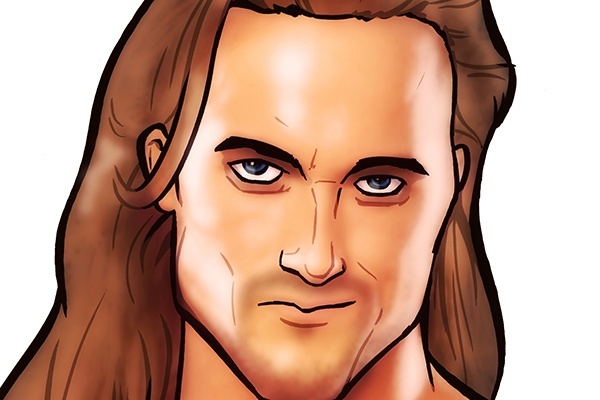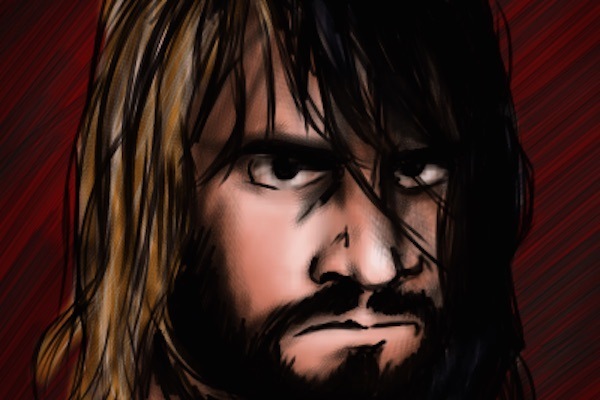
SPOTLIGHTED PODCAST ALERT (YOUR ARTICLE BEGINS A FEW INCHES DOWN)...
Well, hello there readers! To borrow a phrase from a fellow Scot and one of the best wee podgy wrestlers out there, “It’s yersel’ PW Torch fans!”
When I think of British wrestling, I think of Big Daddy, Giant Haystacks, Kendo Nagasaki, and Mick McManus. I think of wrestlers who completely captivated audiences at home, of all ages and walks of life, with their larger-than-life personalities and storylines. Droves of grandmothers up and down the country would lash out, seething at Haystacks when he dared go up against and on occasion better their beloved Big Daddy. Many a handbag would be swung at the heels’ head as they made their way to the ring by furious older ladies. Yes, indeed there were no shortage of flamboyant and larger-than-life characters that kept the masses entertained week after week on ITV’s World Of Sport show. Sadly, though, wrestling started to become less popular and viewing numbers dwindled as the more glitzy hollywood style became the forefront of the sport, gaining hugely in notoriety across the pond. British wrestling faced a quiet exodus and a once-glorious and thriving business became almost obsolete. World Of Sport would shut its doors in 1988 and wrestling disappeared from British terrestrial television.
However, there was a light at the end of the tunnel and this would not be the final hoorah of rasslin’ in Britain. All Star Wrestling, started by former referee Brian Dixon, was quick to pick up the pieces. It had loaned out talent to World Of Sport in its last couple of active years and managed to take on superstars like Big Daddy upon its collapse. ASW also presented a whole host of cream-of-the-crop wrestlers including big names such as Fit Finlay and “British Bulldog” Davey Boy Smith. Wrestling, however, was only shown on satellite TV which at that point was fairly uncommon, therefor limiting its audience and hindering the chances of drawing large crowds to live shows. Again wrestling seemed to be treading water, circling the drain. Something new and fresh was needed. Something a little more… Insane.
Fast-forward to 2006 and a man called Mark Dallas. The young plucky Glaswegian had a huge passion for wrestling and would strive to put on regular indy shows in and around his local stomping ground of Maryhill. He would name this new venture ICW, Insane Championship Wrestling. With a drive so focused that you just knew he was destined for great things and a strong backbone of talent, he succeeded in bringing back independent wrestling to Scotland, selling out venues in Glasgow and the capital Edinburgh. He would soon spread this throughout the rest of the UK, running shows financially off his own back and somehow succeeding at every turn, able to come out on top and move onto a bigger and better show.
Arguably the biggest success of ICW was a young man named Drew McIntyre, a/k/a the Scottish Dragon, Drew Galloway who was to make it to the big time over in America as the next hot thing in WWE. Unfortunately for Drew, his story took a turn for the unexpected when he was let go from his contract before the big push could take place. He would return to the indy circuit and eventually home to ICW where things had already been set ablaze for the independent Scottish company. The returning hero would add fuel to that fire as stunning new talent and well established veterans of the sport alike sparked the long lost intrigue of professional wrestling in the United Kingdom. Soon the buzz spread through the media and the BBC published a lengthy documentary on the company in 2014. The bug was back! Younger, cooler wrestling fans were this time the core of the rabid fanbase and they would eat up everything the company was more than happy to feed them.
Europe too was blessed with several other flourishing indy promotions that would all produce young exciting wrestlers for the world to enjoy. Things had never looked better. With wrestling finally hitting new heights, television companies took notice. Namely, one channel with an illustrious and rich wrestling heritage. ITV.
Much to my and many others’ delight, World Of Sport announced that it was returning to the air and to mainstream British television after nearly 30 long years. Could the days of Big Daddy and Giant Haystacks be back? Will wrestling once again reign supreme as the chosen sport of the UK and the glory days be recaptured for this new generation? I, for one, certainly hope so.
Hopefully these small articles can be a quick and simplified crash course into the British and European wrestling scene as it stands today. In my upcoming columns I hope to let you all know about the great British and European wrestlers and wrestling companies that may have just slipped under your radar. I’ll be trying to cover the standout matches and angles and give you recommendations on what to watch out for in the near future.
If you are interested in checking out ICW you can do so at their site: http://www.insanewrestling.co.uk. There you can subscribe to their network for only $6.99, getting access to all their backlogged catalogue and exclusive new events.
You can also check out and subscribe to their YouTube channel by searching for Insane Championship Wrestling on YouTube. There you will find promos, interviews, and even full, free matches for your viewing enjoyment. My recommendation for a must-watch match this week is the extremely heated fatal four-way contest between champion Pete Dunne, Trent Seven, B.T. Gunn, and Wolfgang for the highly coveted WWE United Kingdom Championship from ICW’s last big card “Shug’s Hoose Party 4.”
If you’d like more background on the origin of the company I strongly suggest watching the BBC’s documentary on ICW, also on YouTube. Just search “Insane Fight Club (2014 BBC Documentary about Insane Championship Wrestling).”
Next week, a more in depth look at the European circuit! Until then… stay frosty ya bunch of maddies!!!




Leave a Reply
You must be logged in to post a comment.